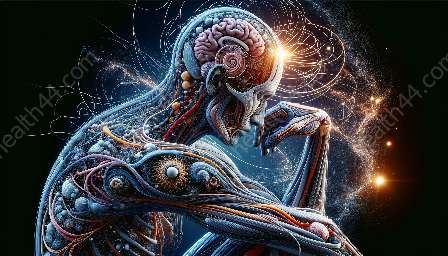Histology, a branch of biology and medicine, is the study of the microscopic structure of cells and tissues. As an essential component of anatomy, histology provides valuable insights into the intricate workings of the human body. This topic cluster aims to explore histology in an engaging and informative manner, making it compatible with anatomy, health education, and medical training.
The Significance of Histology in Anatomy
Histology plays a crucial role in the field of anatomy by delving into the smallest structural units of the body. Understanding the composition and organization of cells and tissues is integral to comprehending the overall function and form of organs and systems within the human body. Through histology, healthcare professionals and students can gain a deeper understanding of the relationships between different cell types and how they contribute to overall health.
Linking Histology to Health Education and Medical Training
In the realm of health education and medical training, histology is a cornerstone of knowledge acquisition. By familiarizing oneself with the diverse range of cells and tissues, individuals pursuing careers in healthcare gain a crucial advantage in diagnosing and treating various medical conditions. Moreover, histology provides the foundation for understanding disease processes and the effects on cellular and tissue structures.
Diving Into the World of Histology
To truly appreciate the marvels of histology, one must comprehend the basics of cellular and tissue composition. From the microscopic examination of cells to the intricate organization of tissues, histology offers a fascinating journey into the building blocks of life. With advanced technologies, such as electron microscopy and immunohistochemistry, researchers can explore cellular structures with unprecedented detail, leading to groundbreaking discoveries in the field of medicine.
Cells: The Building Blocks of Life
Cells are the fundamental units of life, with diverse structures and functions depending on their specific roles in the body. Through histological studies, we can observe the intricate architecture of cells, including the nucleus, cytoplasm, and various organelles that drive cellular activities.
Tissues: Uniting Cells for Specialized Functions
Tissues are aggregates of cells that work together to perform specific functions. Histology enables us to explore the characteristics and arrangement of different types of tissues, such as epithelial, connective, muscle, and nervous tissues, each with unique properties essential for proper body function.
The Art of Histological Techniques
Behind every histological observation lies a variety of techniques that enhance our understanding of cellular and tissue structures. From tissue processing and staining to microscopy and image analysis, histological techniques form the backbone of detailed cell and tissue examination.
Staining Methods: Revealing Cellular Architecture
Staining methods provide a window into the world of histology by highlighting specific structures within cells and tissues. Whether using hematoxylin and eosin (H&E) staining or specialized immunostaining techniques, scientists and medical professionals can visualize cellular details with remarkable precision.
Microscopy: Unveiling the Microcosm
Utilizing advanced microscopy techniques, histologists can peer into the minute details of cells and tissues, uncovering intricate features that may hold the key to understanding disease processes or physiological functions. Electron microscopy, in particular, allows for the visualization of ultrastructural components within cells, opening new frontiers in cellular exploration.
Pathological Perspectives: Histology in Disease Diagnosis
With a firm grasp of histological principles, healthcare professionals can interpret pathological changes present in diseased tissues. Histopathology, a vital branch of medical diagnostics, relies on the microscopic assessment of tissues to identify abnormalities and guide treatment decisions for various diseases, including cancer and inflammatory conditions.
Exploring Cutting-Edge Research in Histology
The rapidly evolving field of histology continues to drive groundbreaking research initiatives, paving the way for innovative medical interventions and therapies. From regenerative medicine to precision oncology, histology serves as a vital tool in unraveling the complexities of human health and disease.
Immunohistochemistry: Unraveling Molecular Signatures
Through the application of immunohistochemistry, researchers can delve into the molecular signatures of cells and tissues, uncovering critical markers that may offer insights into disease mechanisms or therapeutic targets. This powerful technique enables the visualization of specific proteins within tissues, enhancing our understanding of cellular behavior and disease pathways.
3D Reconstruction: Visualizing Cellular Landscapes
Advancements in 3D reconstruction technologies have revolutionized the way we perceive cellular structures. By reconstructing three-dimensional representations of cells and tissues, researchers can gain a holistic view of complex biological systems, fostering new perspectives in anatomical and pathological studies.
Embracing the Intricacies of Histology
From its indispensable role in anatomy to its applications in health education and medical training, histology stands as a testament to the remarkable intricacies of the human body. By engaging with the wonders of histology, we embark on a journey of discovery that enriches our understanding of life at the cellular and tissue levels and shapes the future of healthcare.


